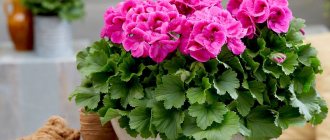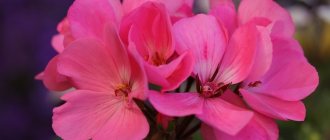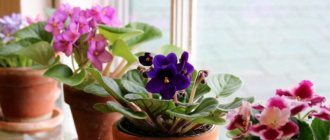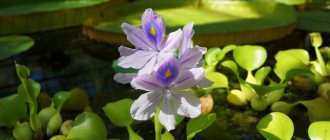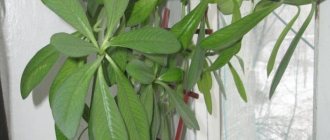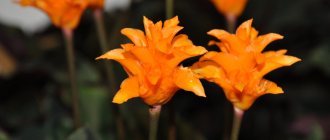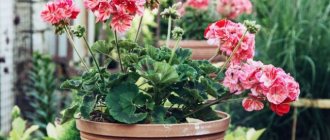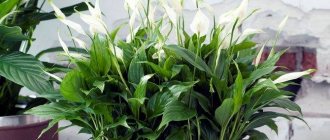Plants for the lazy person
Beautiful, well-groomed green plants decorate the house, saturate the air with phytoncides, absorb harmful substances and create an atmosphere of comfort. But in order for store-bought potted flowers to grow and develop safely in your apartment, you need to take care of them.
Some capricious green creatures need to be sprayed with water mist 3-4 times a day, others need shading from the bright sun at noon and lighting in the evening. People who work outside the home and often go on vacation or on business trips cannot provide such plants with normal care.
So, can we do without greens entirely? No, you just need to choose the most unpretentious indoor plants for landscaping your home. Those that can withstand 1-2 weeks without watering, grow well in the dry air of a heated apartment, feel normal both in the heat and in a cold draft, and do not require frequent feeding and replanting.
1. It is probably difficult to find a more unpretentious indoor plant than Sansevieria (mother-in-law’s tongue, pike tail) . It grows well both on a south window and in a semi-dark corner, but on a sunny window the leaves will be brighter.
You can replant it every few years when it doesn’t fit in the pot. No need to feed.
Sansevieria does not suffer from the dry air of the apartment in winter; it does not need to be sprayed. It is necessary to water it rarely - the dense leathery leaves retain a supply of moisture, in winter you don’t have to water it at all - growth will stop, and it will rest until spring.
Cold drafts of sansevieria are not scary; it often decorates cold foyers and hallways.
2. Another exceptionally persistent hanging plant is Hoya carnosa or “wax ivy.” It grows well on the south window, and it won’t go to waste in the north room either. Its thick waxy leaves accumulate moisture, and it can easily survive several months without watering.
If you managed to completely dry out your hoya and it has lost all its leaves and roots, cut the stalk from the stem and place it in water - in a couple of weeks the plant will sprout roots again.
Wax ivy is replanted very rarely, when there is absolutely no room in the pot. You can also do without fertilizing. And under good maintenance conditions, unpretentious hoya will delight you with abundant and lush flowering.
Crassula ovala , better known as Crassula or “money tree,” is very popular . It needs to be watered rarely - the fleshy leaves retain a lot of moisture. Dry apartment air does not harm the fat woman. It practically does not need fertilizing and replanting.
The money tree can grow on the south window and on the north. Can be kept in a cool room in winter at temperatures up to 10 degrees.
You just need to follow two simple rules for caring for a money tree: the pot is small so that the soil has time to dry between waterings, and add more sand, perlite or vermiculite to the soil mixture.
It reproduces easily - just stick a leaf into the ground or water.
4. The graceful green or white-green narrow leaves of chlorophytum appear tender and brittle. But this plant is one of the most undemanding and easy to care for. Its underground part has thickenings that accumulate water and nutrients.
Chlorophytum is not afraid of drought and excess moisture, heat and cold drafts; it can grow in the sun and in the shade. It can live in one pot for many years (it’s better, of course, to replant it on time, but it won’t go away without replanting and fertilizing).
Chlorophytum is considered one of the best absorbers of harmful substances from the air. Perhaps the reason the plant is able to survive without proper care is because it can obtain and process the substances it needs from the air.
5. Aspidistra also does not require special care. This plant in England is called the “cast iron plant” for its ability to withstand heat and cold, lack of light and moisture. Its other name is “friendly family” because of the large number of leaves on long petioles growing from a small pot.
This plant is ideal:
- for northern rooms,
- for decorating rooms with insufficient daylight,
- for landscaping offices with artificial lighting.
Aspidistra grows normally in dry and humid air, is not afraid of drafts or heat, and does not suffer from excess or lack of moisture. It needs to be replanted rarely, when the rhizome begins to occupy almost the entire pot.
zamioculcas does not need special care . Tolerates poor lighting and interruptions in soil watering. Zamiakulkas does not suffer from bright sun, does not require frequent replanting and fertilizing, and grows well in a small pot.
If you do not water for a long time, it will shed all the leaf blades and lose its decorative appearance, but new complex leaves will quickly grow from the tuber (thickened stem under the surface of the soil) after watering.
The only requirement is that the soil should not be too nutritious and dense. It is better to mix ready-made soil for violets or cacti with sand.
Dracaena Sandera
New Africa / Shutterstock
Dracaena Sandera has a thin, curved trunk with constrictions. For this it is called the “bamboo of happiness.” But dracaena has nothing to do with this tropical plant.
How to care
Light . Dracaena Sandera loves light, but also grows well in the shade. But it is better to keep this plant away from direct sunlight.
Water . You need to water as the soil dries out: about once or twice a week. Dracaena leaves should be periodically wiped with a damp cloth or cotton pad.
Transplant . Once a year, regardless of age.
What else do you need to know . The lower leaves may turn yellow. If this process is slow, this is normal; if they change color abruptly, the plant needs feeding. Dracaena leaves may begin to curl: this means that the temperature in the room is low for it.
Schlumbergera, or Zygocactus
Dyfrain / Shutterstock
This is also a cactus, but it is very different from the others both in appearance (it has no thorns at all) and in the rules of care. This plant is also called Decembrist and Christmas cactus because it is covered with red or pink flowers in winter - in December or January.
How to care
Light . Unlike other cacti, Schlumbergera is very susceptible to direct sunlight, so it cannot be placed on a windowsill or balcony. But if the place is slightly shaded, it’s not scary.
Water . Schlumbergera needs to be watered regularly: once or twice a week. Additionally, you can moisten the plant using a spray bottle.
Transplant . First once a year, and then every three to four years. The flower needs an annual transplant - preferably at the end of February, after flowering has ended.
What else do you need to know . To prevent Schlumbergera from growing excessively, at the beginning of summer you can remove the shoots, but without using scissors: just unscrew the excess with your fingers. After this procedure, the shape of the plant will improve and it will bloom even more abundantly.
Indoor plants for dark rooms
Not all indoor plants are light-loving. There are also those who feel great in shaded rooms, and even cannot tolerate too bright colors. In this case, you can choose the appropriate option from the following list of indoor flowers.
Begonia
There are more than 100 varieties of begonia. Each of them is good in its own way, but tuberous and root varieties of the crop are used to decorate rooms and office spaces. This flower:
- Tolerant to growing conditions.
- Feels good in the shade.
- Does not require frequent watering.
Begonia is perfect for beginner gardeners.
Spathiphyllum
Popularly called “female happiness,” this is a beautiful decorative indoor plant with white flowers. It does not require specific care and grows well in the shade, but it loves moisture, so the soil should not be allowed to dry out. The optimal humidity for spathiphyllum is 50% and above.
Also read: Venus Flytrap floral predator
Freezea
Quite a bright, extraordinary plant from the Bromeliad genus. It has a colorful peduncle, shaped like the feather of a fairy-tale firebird. The plant blooms in partial shade, but loves high humidity and temperatures not lower than 22 °C. In general, the flower is unpretentious.
Clivia
A flower from the Amaryllis family. Loves shaded places and sufficient moisture. The flowering period usually occurs in February and March. The flower does not require special care.
Streptocarpus
Streptocarpus is a representative of the Gesneriev family. The plant looks quite unusual and has a specific color. This flower will decorate any shaded room, and there is no need to fuss around it - it adapts well to different environmental conditions. Blooms profusely.
Miltonia
A very beautiful flower, which became the basis for the creation of equally interesting hybrids . It loves high humidity, so it needs regular watering. Blooms fully in the shade.
Ficus elastica
f2.8 / Shutterstock
Unlike its relative Ficus benjamina, Ficus elastica is very easy to care for. True, you won’t get flowers from him: for this he needs certain conditions, which are almost impossible to achieve in an apartment or even in a greenhouse at the dacha. But it is very good even without flowers.
How to care
Light . Ficus grows best in good light, so try to place it near a window. But not on the windowsill: direct sunlight can damage the leaves. You can also place the ficus in the shade, but then the bottom row of leaves may fly off.
Water . It is recommended to water the ficus when the top layer of soil is completely dry. In summer and spring you need to do this a maximum of twice a week, and in autumn and winter once is enough. You cannot fill the ficus with water, otherwise it will get sick and the leaves will fall off. In the warm season, you can spray ficus leaves from a spray bottle.
Transplant . While the ficus is young, it needs to be replanted every year. And an adult bush - as needed. You can understand that the ficus has become crowded by the amount of water in the pan: if after watering there is too much of it, it’s time to replant.
What else do you need to know . In nature, ficus grows up to 30 meters in height. In an apartment he is not capable of such feats, but he is quite capable of becoming a meter-tall tree. To maintain its decorative appearance, trim the tops. The procedure should be carried out in the spring.
